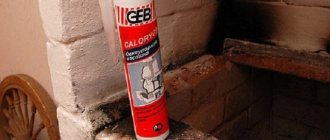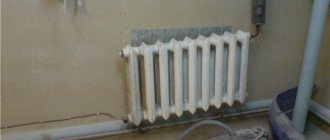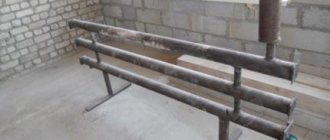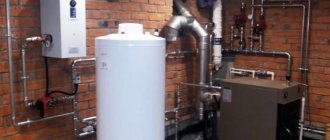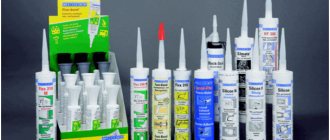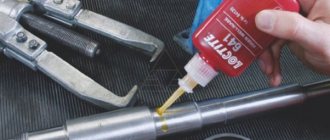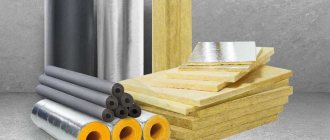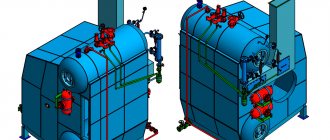Safe operation is a mandatory requirement for every stove and fireplace. It is taken into account both during construction and manufacturing, and during installation and use of heating devices. This has led to the emergence of sealing materials that can withstand significant temperatures, applied for a short time or for a long time. Let's look at why a high-temperature sealant is needed. Let's look at its classification, types, and selection algorithm.
Sealing composition for furnace structures Source prom.st
Purpose of special high-temperature compounds
Nowadays, fireplaces and stoves are made from bricks and steel. Device cases are hermetically sealed structures. After all, only in this case the combustion products do not enter the room, but are discharged outside through the chimney. It is furnace sealant that is used by craftsmen to eliminate gaps and cracks between various mating parts during the construction and installation of devices.
A special composition is also used to eliminate cracks formed as a result of active use of brick heating structures. Their appearance accelerates in uncoated and unprotected masonry. Therefore, devices are often decorated with tiles, finished with plaster and covered with heat-resistant paint.
Important! Heating devices with leaky combustion chambers, smoke ducts and other elements are unsafe to use. Therefore, repair work is carried out as quickly as possible.
Cracked stove wall Source diy.ru
Through cracks worsen the performance of stoves and fireplaces. The user may encounter the following problems:
- increased fuel consumption due to additional air entering the combustion chamber;
- the appearance of soot on the walls, ceiling and contamination of other surfaces in the room;
- filling the room with combustion products, which worsen health and even lead to poisoning of people;
- regular fire extinguishing, possibly due to depressurization of smoke exhaust channels;
- the formation of a large amount of soot on the internal walls of the chimney due to fuel combustion at insufficiently high temperatures, which forces the structure to be cleaned more often.
The combination of through cracks and soot increases the likelihood of a fire hazard. The appearance of oxygen in the chimney often causes a fire in the duct. To prevent this and other fire hazards, thermal insulating compounds are used. They are specially designed to eliminate cracks and various gaps in equipment that is used in difficult conditions.
Fire in the chimney Source bobvila.com
Classification of high-temperature furnace sealing compounds
Thermal insulating compounds are produced based on different substances. During construction and installation of stove structures and fireplaces, sealants are used, the main component of which is silicate or silicone. They have individual characteristics and are used in different places.
The first group includes heat-resistant compounds. They are able to withstand exposure to flame. The second type includes heat-resistant sealant for ovens. This composition has a significantly lower operating temperature compared to refractory substances.
See also: Catalog of companies that specialize in finishing materials and related work
Heat-resistant compositions from silicate components
This type of sealing material is made on the basis of sodium silicate. The substance has the appearance of a black viscous composition. After its contact with air, an inelastic layer is formed. Therefore, experts advise using heat-resistant sealant when the shrinkage of the brick stove structure is completed. However, manufacturers do not recommend applying it in places that are subject to vibration loads. Otherwise, the risk of cracks in it increases.
Heat-resistant composition Source 24aul.ru
Silicate sealants have the following characteristics:
- the greatest thickness of the sealing layer is 15 mm;
- permissible temperature during short-term exposure is from 1400 ℃ to 1500 ℃, and for a long time - 1300 ℃;
- curing time – maximum 15 minutes;
- Ambient temperature for use – from 1 ℃ to 40 ℃ (the value differs from different manufacturers);
- maximum linear deformation while maintaining the integrity of the hardened mass is 7%.
Heat-resistant sealant for ovens is a mass with good adhesive properties. To increase adhesion, manufacturers recommend first treating concrete, brick or steel surfaces with an abrasive material.
At the same time, not every heat-resistant sealing material is fire-resistant. Therefore, not all such substances can withstand exposure to fire. Only sealants with the appropriate designation have this ability.
Using heat-resistant black sealant Source vseinstrumenti.ru
Let's outline the scope of application
Construction supermarkets sell many sealing pastes used in heating, plumbing and sewerage systems. You must understand that ordinary food and plumbing sealants are not high-temperature, although they are used for installing some elements of chimney pipes.
Deep cracks can be sealed with mortar, but it is better to fill them with heat-resistant sealing paste
Water- and heat-resistant sealants are used for steel stoves, masonry, and fireplace repairs. Application options:
- Sealing cracks and holes in the walls of a combustion chamber built of brick or welded metal.
- Sealing chimney pipes during repair or installation.
- Exterior finishing of brick fireplaces and stoves.
- Bonding heat-resistant gaskets (asbestos and graphite-asbestos cords) to metal fittings - doors, valves, iron ovens and cast iron stoves.
- Waterproofing of roof junctions with chimneys made of metal and brick.
Note. Some repair compounds are even used to restore refractory masonry made of fireclay bricks. One condition: the maximum temperature in the firebox is 1500 °C.
A crack in the stove masonry or welded joint of a steel firebox leads to smoke in the heated room and the formation of soot in the defect area. The traditional way to eliminate it is to move the stove or cover the through gap with clay. Modern high-temperature sealant allows you to solve the problem much faster and more efficiently.
A cracked brick chimney often needs to be rebuilt
The suction of street air into the chimney pipe is a very unpleasant phenomenon. More condensation and soot fall on the walls, which can ignite at any time due to the high temperature of the flue gases. Hence the need arises to seal the connections between the chimney elements. We will discuss other methods of application in detail during the review of repair compositions.
Types of high-temperature sealing substances according to release form
Manufacturers mainly produce oven sealants for household use in tubes. They are used together with a construction gun. Manufacturers offer formulations in small tubes especially for treating small areas. The sealing material is squeezed out of them by simply pressing.
More often, single-component sealants are used for stoves and chimneys in residential buildings. They are used without any prior preparation. Such compositions require more time to dry compared to two-component substances. This allows you to correct errors made during installation.
Manufacturers produce two-component sealants in the form of a set consisting of a paste and a hardener. The components of the sealing material are mixed in accordance with the proportions specified in the instructions.
A two-component sealing agent is used in industrial facilities Source ad-cd.net
Heat-resistant and heat-resistant sealants: what are the differences?
According to their temperature characteristics, insulation products are divided into heat-resistant and heat-resistant. They are used to seal joints between different sections of a structure, as they can withstand different temperatures. If heat-resistant ones are only suitable for external surfaces, then heat-resistant ones can seal the cracks of a high-temperature chimney, where temperatures are especially high.
Algorithm for selecting heat-resistant sealant
When selecting a sealant for a stainless steel chimney, brick or oven walls, its properties, recommended area of use and composition are taken into account. The operating temperature is also taken into account. The value of this characteristic is influenced by the base from which the sealant is made. When selecting a material, the operating conditions of the sealing composition are compared with its endurance temperature.
Important! To repair fireboxes, smoke exhaust ducts, and eliminate cracks near doors, only high-temperature sealant of 1500 degrees is used. If you use a composition with a low endurance temperature, it will collapse over time. Under high temperature exposure, delamination of the mineral filler occurs.
In addition, the composition should not contain volatile compounds that pose a health hazard. Therefore, they purchase products from trusted manufacturers. The packaging of a quality product always contains instructions for its use.
Tips and tricks
To effectively eliminate cracks in stoves, pipes, and fireplaces, you must adhere to the following tips:
- use seals exclusively for special purposes;
- carry out repairs on a cooled surface;
- allow the composition to dry completely;
- the working surface must first be cleaned;
- observe fire safety measures.
The use of sealants to eliminate problem areas on fireplaces, chimneys, and stoves allows for quick and high-quality repairs. The main thing is to choose compositions taking into account specific conditions; for work on the roof you will need pastes for external use, indoors - for indoor use. A review of the best sealants allows you to navigate the choice of the appropriate composition.
Briefly about the main thing
Heat-resistant sealants are used during the construction and installation of stove equipment in private residential buildings and bathhouses. The compositions are also used to repair heating devices. With their help, seams, joints, cracks in brickwork are sealed, and connections of elements of chimney systems are sealed.
Manufacturers produce high-temperature compositions based on silicate and silicone. The first type of material is black, and the second is brown-red. Sealing silicate and silicone substances also differ in their maximum operating temperature. It is 300 ℃ and 1500 ℃ respectively. When selecting sealants, be sure to take into account their endurance temperature and place of use.
Rules for using thermosealants
The tactics for using silicone and silicate mixtures are similar. However, there are also features that should be kept in mind when sealing furnace equipment.
Working with silicone compound
In addition to the construction tools for work, you need to prepare: a rubber spatula, latex gloves, and a brush.
The surface to be treated needs preparation:
- clean and degrease the base;
- It is advisable to treat metal elements with sandpaper to improve adhesion;
- wait for the surface to dry completely if water was used during cleaning.
The next stage is filling the cylinder into the construction gun. Cut off the sealed cap at an angle.
It is desirable that the thickness of the extruded sealant be slightly less than the width of the seam or crack being processed
For uniform hardening, the silicone composition must be provided with air access. Therefore, the thickness of the sealant recommended by the manufacturer cannot be exceeded.
The time for complete polymerization depends on the conditions. The packaging indicates the rate of hardening at optimal parameters: humidity - 50%, temperature - 23°C. In practice, the values vary significantly. The lower the room temperature, the longer it will take for the sealant to “set.”
Technology for applying heat-resistant sealant
To process with a refractory compound, in addition to the tools and materials described above, you will need masking tape and a construction knife.
Adhesive tape is necessary to protect the outer coating - the sealant dries quickly, and then removing it from the base will be problematic
The surfaces are prepared in the same way as before applying the silicone composition: cleaned, degreased, and the metal is “sanded” with an abrasive.
Technological nuances of using silicate sealant:
- the porous base must be dusted and slightly moistened;
- work is carried out only at above-zero temperatures, optimally above +20°C;
- when applying the mixture, adhere to the insulation thickness recommended by the manufacturer;
- excess sealant must be removed immediately, without waiting for the mixture to dry;
- The masking tape is removed after applying the composition.
Some oven sealants require many hours of drying at different temperatures. This information must be clarified in the product instructions.
The best manufacturers
It is better to buy products from trusted manufacturers - their quality is usually higher. The low price should alert you - heat-resistant products cannot be too cheap. Otherwise, organic substances may be added to reduce the amount of silicone. The strength of such a material will be much lower, as will its elasticity.
The following brands have proven themselves well:
- Moment Germent High Temperature. Withstands up to +315 degrees, can be used for car repairs, heating systems, perfectly fills grooves and cracks, suitable for metal, wood, stone, glass, plastic.
- ABRO. Sealants from this company are sold in a large assortment, of different colors, with different technical characteristics. Within a few seconds, the products create gaskets with the highest strength.
- Foamed. The Estonian brand produces a material for filling seams and cracks that can withstand up to +1500 degrees of heating.
- Macroflex. Fireproof sealants of this brand are used for joining parts and repairing defects on products with low mobility, since the connection will be rigid. Withstands temperatures of +1200…+1500 degrees.
Soudal, Krass, and Titan sealants are also famous for their excellent quality. All these means can eliminate the need for expensive repairs or reinstallation of stoves and fireplaces. If you strictly follow the instructions, you can get a reliable connection by doing all the work yourself.
Can it be sealed with cement?
Previously, cement was used for sealing due to the lack of other materials and solutions. Currently, cement is used only to seal cracks in the roof where the chimney exits. Yes, and then only in cases where the house is covered with slate. To ensure good performance, asbestos is added to cement.
It is better not to use cement to seal joints along the entire length of the chimney. Due to temperature changes, it can crack and quickly lose its properties. It is better to give preference to modern materials that are designed specifically for sealing chimneys and use at high temperatures.
Main types
The methods for dividing adhesive pastes into groups are quite varied. Some types of classifications may not be useful when selecting a substance for a specific job. Let us dwell in detail only on the fundamental types, and initially consider several more divisions.
- Classification by type of packaging. Sealants are sold in soft tubes, which are convenient for use on small surface areas. No additional equipment is required to apply the substance. The method of use has long been familiar to us, since toothpaste is produced in similar tubes. An alternative is a hard tube, which is adapted for a special gun. Using such a device, it is convenient to apply sealant, filling the cracks with it.
- Classification by number of components. The basic principle of action of sealants is the intermolecular interaction of the substance and the surface. In order for the connection to be stable, it is necessary to wait until the substance hardens. Some manufacturers use auxiliary polymers to speed up this process. When they are mixed, a paste is formed that has adhesion properties. But the technology for preparing such a mixture requires very precise proportions. The high rate of hardening forces repair work to be carried out at an accelerated pace. Therefore, such two-component sealants are often used by craftsmen with sufficient experience. The one-component type of glue takes longer to dry, but is completely ready for use and allows, if necessary, to dismantle the glued surfaces in order to correct mistakes.
- Separation based on maximum exposure temperature. There are heat-resistant sealants for fireplaces and stoves and heat-resistant. But, in addition to these parameters, both types of sealants have distinctive properties that allow them to be used in different types of work.
Criterias of choice
Before you make a choice about how to seal your chimney, you need to understand that effective means of protection in the smoke ventilation system are not cheap. You should not save your money on heat-resistant sealants. It is safer to purchase these materials from popular brands and in large shopping centers, but it is recommended to keep your receipt. High molecular weight silicone is an expensive material and sometimes there are counterfeits on the Internet.
There is a simple option for checking the material than sealing the gap. If several bottles are purchased, then squeeze out a little of the substance from one, wait until it hardens, and set it on fire. Real silicone is difficult to ignite and burns with the release of a mixture of dark and light soot - hydrocarbons and silicon oxide. Fake sealant, usually containing acrylic and PVC, burns and releases only black soot.
It should also be noted that heat-resistant sealants for furnaces and flues are sold in tubes for a construction gun. If the store recommends polymer in classic tubes, most likely it is all a sealing material for cars; it is acidic in nature and is absolutely not suitable for heating devices and gas ducts. In this regard, carefully study the instructions on the packaging before sealing a stainless steel chimney.
When studying, you need to especially pay attention to the following characteristics:
- Permissible temperature. It must meet the operating conditions in the hot zone.
- Working environment. The sealing material must be neutral.
- Manufacturer's brand. Popular models of heat-resistant sealants are Penosil up to 1300 C, Makroflex up to 260 C, and domestic “Moment Germent”.
- Price. Silicone polymers are much cheaper than silicate ones.
Results
As with all building materials, sealants also need to be understood. High-temperature sealants are a very narrow and specific segment, but even here there are many nuances, ignorance of which can lead to errors and insufficient tightness of products.
The choice of building materials for installation and repair work with brick fireplaces is strictly limited by such parameters as heat resistance, adhesion, and environmental safety. The need to use such substances arises even at the stage of construction of fireplaces or stoves. The difficulty lies not only in the high temperature of the working unit, but also in the difference in the coefficients of thermal expansion for different elements.
Installation technology for corrugated stainless steel pipes
It should be noted that the installation of corrugated pipes is a simple process. Thanks to the variety of types of fittings, it is quite possible to assemble any system yourself, without the involvement of specialists. The main thing is to follow the sequence of technological steps during the installation process and the correctness of the work performed, which will ultimately allow you to obtain a strong, reliable and durable pipe connection.
The installation technology itself requires a clear sequence of certain actions:
- Connecting fittings to pipes and faucets. At this point you need to make sure that the union nut on the side of the pipe connection is not tight.
- Trimming the required amount of material. This must be done using a special tool - a roller pipe cutter. The cut should be neat, without burrs.
- The pipe is inserted into the fitting and the union nut is tightened.
- The pipeline is fixed in the desired position using special fasteners in the form of clips and clamps for this purpose.
- Checking the health of the system. If a leak is detected, you need to tighten the union nuts a little more.
Thanks to the variety of types of fittings, it is quite possible to assemble any system yourself, without the involvement of specialists
